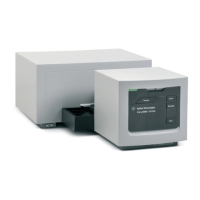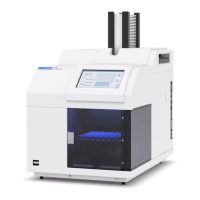Understanding Your Agilent ChemStation 27
Agilent ChemStation Features
1
About the ChemStation Software
Automation
The ChemStation can execute multimethod sequences.
The sequence parameter set may be defined to use automatically generated
files or sequentially numbered files with a user-defined prefix of up to fifteen
characters. The user may select to run full analyses or data reprocessing only
sequences and can also select one of a series of technique specific shutdown
commands or a user-defined shutdown macro that runs when the sequence
terminates either by error or after all the analyses are completed.
The sequence table, or list of analyses to run, is built in a spreadsheet-like user
interface that allows users to specify vial numbers and sample names, analysis
methods, sample quantification parameters including sample amount, a
multiplier and dilution factor, calibration specification, data exchange
parameter LIMSID and the number of repeat injections. Depending of the
configured instruments and modules, more fields will accessible, e.g. if an
Agilent 1100/1200 LC system includes a fraction collector, the “Fract. Start”
column will appear in the sequence table. The appearance of the sequence
table can be configured by the user. The user can jump between individual
cells in the table and copy, cut or paste individual cells or entire rows or series
of rows in order to build sequences efficiently and quickly.
Samples may be identified in the sequence table as unknowns, calibration or
control sample types. The sample type determines any special data evaluation
treatment of the sample:
• unknown samples are evaluated and reported according to the method
specification,
• calibration samples are used to recalibrate the quantification component of
the method as described below, and
• control samples are evaluated against the limits for each component
defined in the method. If the results lie outside any specified parameter
range the execution of the sequence will be halted.
Calibration samples may be defined as simple, cyclic or bracketed. Simple
recalibrations mean a recalibration occurs each time a calibration sample is
defined in the sequence. Cyclic recalibrations occur at defined intervals
during analysis of a series of unknowns. In bracketing a series of unknown
samples, two calibration sets are analyzed. The quantitative reports for the
unknown samples are then calculated using a calibration table averaged
between the two calibration sets.

